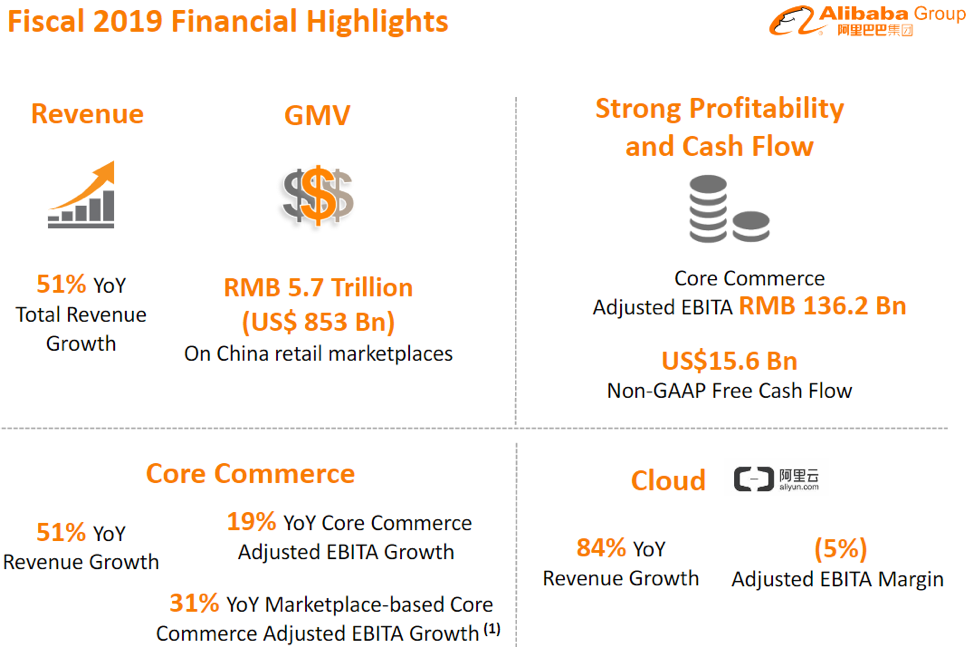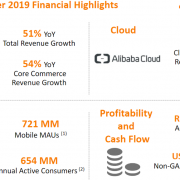If you’re looking for a long-term trend that highlights the state of the world, then there is no other source than Alibaba (BABA), the Amazon (AMZN) of China.
I am not saying to go out and buy this e-commerce juggernaut hand over fist, but understanding the essence of Alibaba offers an insight into the technological effects that big tech companies have on the global consumer.
Alibaba and Amazon, together, and their success have had an outsized influence on central banks around the world.
Back stateside, mixed data of persistently low inflation has confounded economists in the years since the Federal Reserve first adopted its 2% inflation target after the financial crisis.
These e-commerce firms' endeavors mean that we can whittle down expenses, migrating pricing power away from the middle class while padding the pockets of a few tech shareholders.
And if you thought Amazon offers low prices, Alibaba often offers even lower price tags because of knockoffs that are blatantly hawked on their platform.
These two companies have rocked the current marketplace by jacking up supply, which in effect brings prices down with their volume-first business models.
Inflationary signals have continued to be suppressed below the Federal Reserve’s 2% target and is mostly likely to stay low into the foreseeable future.
The Fed’s concocted measure of inflation – or the “core” personal consumption expenditures index excludes the volatile categories of food and energy.
This slowed to a rate of 1.6% year-over-year in March, marking the slowest pace since January 2018.
Combine low inflation with a national unemployment rate cratering to a 49-year low in April, and economists start to sniff around attempting to understand what is truly happening.
Theoretically, a low unemployment rate generally translates into higher levels of inflation, but the inflation is being captured by tech CEOs who are offering free services or something close to it that destroys traditional pricing mechanisms.
Once ingrained economic relationships are going extinct, and the underlying relationship has mutated to the benefit of Silicon Valley.
The economic models you once learned in school are now dead and I am giving you the reasons why.
In the Federal Reserve’s most recent policy meeting, Chairman Jerome Powell attributed factors blaming lower inflation on “transitory” variables including slipping financial service fees after the stock market’s fourth-quarter slide, along with healthcare costs.
The consequence is massive with the Fed unable to aggressively raise rates while putting the kibosh on any meaningful wage growth even while the economy is growing at 4% annually.
This has given the Fed the impetus to put rates on pause this year, which is a net dovish outcome after offering a more hawkish stance last winter.
The closely watched Fed Funds Futures tool signaled markets pricing in a 75% probability that the central bank would cut rates at least once by its December meeting which could be an overzealous prediction.
Alibaba is doing its best to crush global inflation by selling over $850 billion in Gross Merchandizing Volume (GMV) last quarter.
Not only are they selling physical goods, but they hope to crash the price for storing digital data with its cloud revenue growing 84% last year dotting Europe with new data centers.
Alibaba’s core e-commerce revenue was up 51% YOY last quarter with 721 million monthly active users.
Alibaba’s monthly active user totals are twice the population size of the United States epitomizing the breadth of this business that is quickly gaining traction in parts of Europe and Russia.
And even with Silicon Valley hijacking inflation, their interests are being staunchly defended by the current American administration from the Chinese who have copied the Silicon Valley deflation model themselves.
The trade fallout could cause massive store closures in America with more malls shuttering from the extra costs of the levied tariffs giving tech even more leeway into the e-commerce game enabling them to capture more revenue.
Brick & mortar retail is incrementally struggling with less foot traffic as customers stay home and click away on Amazon, and the new 25% bump in costs of goods could be the death knell for a large segment of physical stores.
UBS issued a note projecting nearly 21,000 retail stores will close by 2026 in the U.S.
The trade war will put into question future American jobs and increase costs for consumers.
Ultimately, Silicon Valley can have their cake and eat it too boding well for future tech stocks.
The most powerful part about Silicon Valley is the speed in which they can put analog firms out of business leaving the tech wolves to scoop up the most scrumptious leftovers.
We are just scratching the surface of what Silicon Valley will deliver for its stakeholders giving the average investor a strong hint that if you don’t have skin in the tech game yet, then it’s time to join the bandwagon.
Technology will outperform every sector going forward in almost every feasible circumstance, contrast this with sectors who are burning before our eyes, and the smart investor will understand that the deflation signs of the economy are a gilded edge buy sign for the best of breed tech.
Investors should be aware long-term that Amazon and Alibaba will harvest the inflation and pocket it in terms of revenue instead of profits because of the decision to prioritize growth over profits growing so large that they will be akin to a monopoly.
In either outcome, it equates to buy and buy some more of these shares.






